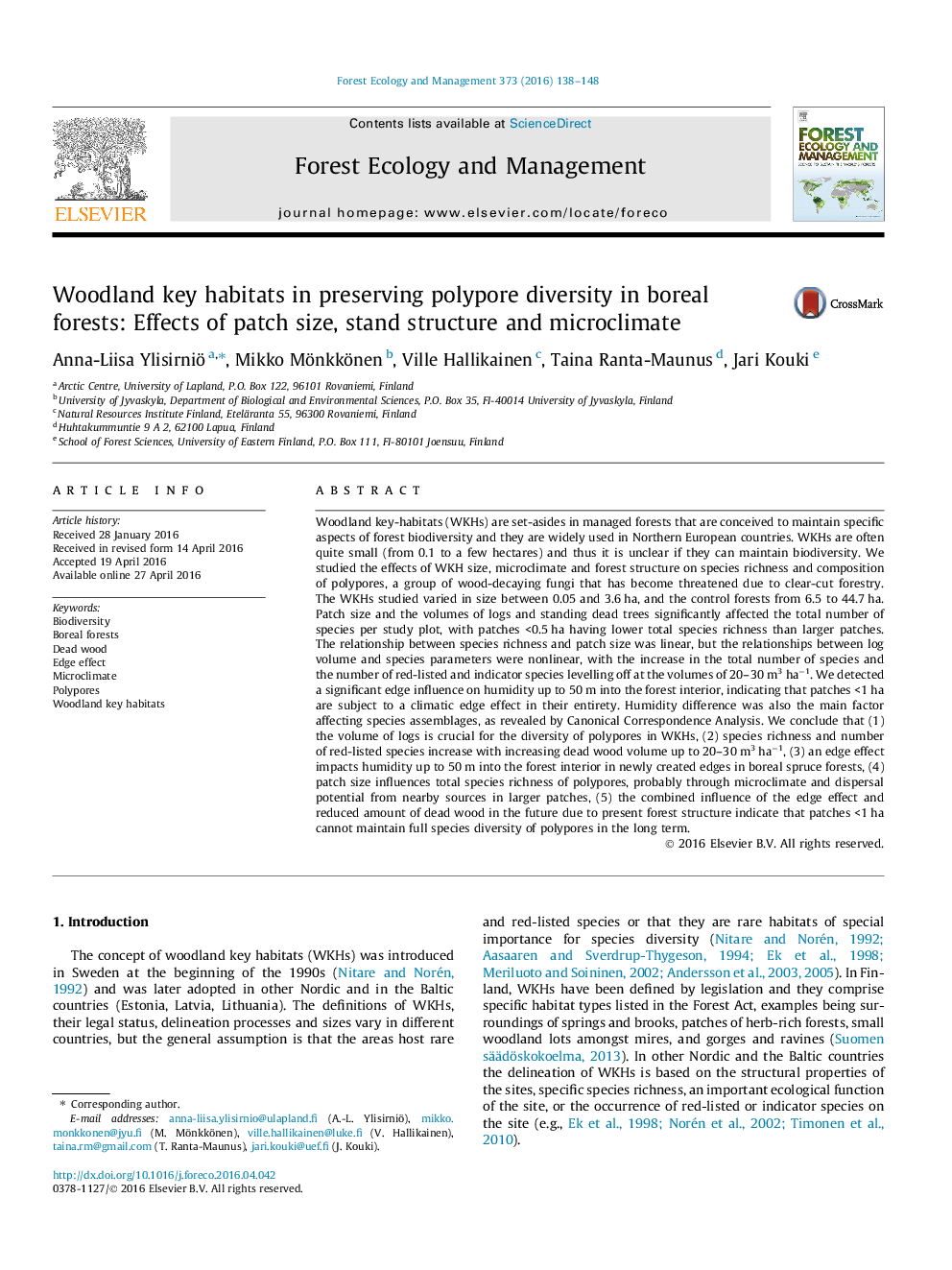| کد مقاله | کد نشریه | سال انتشار | مقاله انگلیسی | نسخه تمام متن |
|---|---|---|---|---|
| 6542253 | 159150 | 2016 | 11 صفحه PDF | دانلود رایگان |
عنوان انگلیسی مقاله ISI
Woodland key habitats in preserving polypore diversity in boreal forests: Effects of patch size, stand structure and microclimate
ترجمه فارسی عنوان
زیستگاه های کلیدی جنگل در حفظ تنوع پلیپور در جنگل های بکر: اثرات اندازه پچ، ساختار نهفته و محیط زیست
دانلود مقاله + سفارش ترجمه
دانلود مقاله ISI انگلیسی
رایگان برای ایرانیان
کلمات کلیدی
موضوعات مرتبط
علوم زیستی و بیوفناوری
علوم کشاورزی و بیولوژیک
بوم شناسی، تکامل، رفتار و سامانه شناسی
چکیده انگلیسی
Woodland key-habitats (WKHs) are set-asides in managed forests that are conceived to maintain specific aspects of forest biodiversity and they are widely used in Northern European countries. WKHs are often quite small (from 0.1 to a few hectares) and thus it is unclear if they can maintain biodiversity. We studied the effects of WKH size, microclimate and forest structure on species richness and composition of polypores, a group of wood-decaying fungi that has become threatened due to clear-cut forestry. The WKHs studied varied in size between 0.05 and 3.6Â ha, and the control forests from 6.5 to 44.7Â ha. Patch size and the volumes of logs and standing dead trees significantly affected the total number of species per study plot, with patches <0.5Â ha having lower total species richness than larger patches. The relationship between species richness and patch size was linear, but the relationships between log volume and species parameters were nonlinear, with the increase in the total number of species and the number of red-listed and indicator species levelling off at the volumes of 20-30Â m3Â haâ1. We detected a significant edge influence on humidity up to 50Â m into the forest interior, indicating that patches <1Â ha are subject to a climatic edge effect in their entirety. Humidity difference was also the main factor affecting species assemblages, as revealed by Canonical Correspondence Analysis. We conclude that (1) the volume of logs is crucial for the diversity of polypores in WKHs, (2) species richness and number of red-listed species increase with increasing dead wood volume up to 20-30Â m3Â haâ1, (3) an edge effect impacts humidity up to 50Â m into the forest interior in newly created edges in boreal spruce forests, (4) patch size influences total species richness of polypores, probably through microclimate and dispersal potential from nearby sources in larger patches, (5) the combined influence of the edge effect and reduced amount of dead wood in the future due to present forest structure indicate that patches <1Â ha cannot maintain full species diversity of polypores in the long term.
ناشر
Database: Elsevier - ScienceDirect (ساینس دایرکت)
Journal: Forest Ecology and Management - Volume 373, 1 August 2016, Pages 138-148
Journal: Forest Ecology and Management - Volume 373, 1 August 2016, Pages 138-148
نویسندگان
Anna-Liisa Ylisirniö, Mikko Mönkkönen, Ville Hallikainen, Taina Ranta-Maunus, Jari Kouki,
